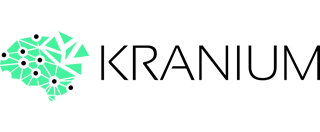Unplanned well downtime is one of the costliest disruptions in oil and gas operations. Equipment failure, structural collapses, and pressure anomalies often go unnoticed until it’s too late, costing millions in halted production and emergency repairs. What if you could spot trouble coming before it happens? With no-code machine learning (ML) on the Workbench app, that’s exactly what’s possible. ML models can analyze real-time data streams, predict failures in advance, and trigger alerts so field teams can act early. You don’t need a team of data scientists, just the right AI tool and the right data.
1. Understanding the Cost of Well Downtime
Every minute a well sits idle due to failure, companies bleed revenue. Whether it’s an offshore rig or a shale operation, unplanned downtime hits hard. Traditional monitoring systems are reactive, they notify after something breaks. That’s not enough anymore. With AI model building on Workbench, oil and gas teams can proactively identify risks and intervene early. Think of it as predictive maintenance on steroids. By flagging issues before they escalate, like pressure inconsistencies, vibration anomalies, or temperature spikes, operators can shut down wells safely and fix problems quickly, rather than scrambling in crisis mode.
2. Building Predictive Models Without Code
Oilfield engineers aren’t always machine learning experts—and they shouldn’t need to be. Workbench bridges that gap. With its no-code machine learning (ML) platform, teams can upload historical data from sensors, equipment logs, and control systems and build custom models through a visual interface. No coding. No complex algorithms to write. These models can be trained to detect early signs of structural fatigue, identify patterns that precede well collapse, or even forecast environmental risks. It’s about putting actionable insights into the hands of domain experts without the traditional tech overhead.
3. Real-Time Monitoring That Thinks Ahead
Deploying a model is only half the battle, it’s the real-time performance that matters. Once trained, your ML model on Workbench can plug into live data sources across your wells, temperature sensors, seismic monitors, flow meters, and more. It processes all of this data in real time and compares it against learned patterns. When something goes off-script, you get alerted immediately. That’s AI automation with real-world impact. You reduce downtime, minimize loss, and maintain compliance, without adding manual work. It’s not just smarter monitoring, it’s smarter operations.
4. From Prediction to Prevention with Custom AI
Knowing a collapse might happen isn’t enough, you need to know why. That’s where custom AI application development on Workbench comes in. Models built on the platform can provide explainable AI outputs, highlighting the exact sensor anomalies or historical conditions that flagged a well as high-risk. This transparency is critical for operations and decision-making. Managers can prioritize wells for maintenance, allocate resources strategically, and improve their maintenance planning over time. With data-backed reasoning, you don’t just guess, you act with confidence and clarity.
5. Strategic Gains for Oil and Gas Operations
Avoiding a single well failure can save hundreds of thousands, if not millions, in repairs and lost production. But the bigger win lies in long-term strategy. Using no-code AI through Workbench enables oil and gas companies to build a scalable, intelligent risk management framework. Instead of depending on reactive systems, teams are empowered with predictive tools they can customize, deploy, and maintain without external help. That reduces operational friction, speeds up decision cycles, and helps build a more resilient business model in a volatile industry.
Conclusion
Unplanned well failures shouldn’t be a surprise anymore. With Workbench’s no-code machine learning (ML) tools, oil and gas companies can move from reactive firefighting to predictive foresight. Build powerful AI models using your own data, monitor wells in real time, and get clear alerts before failures strike. No coding, no steep learning curves, just tangible results. By reducing downtime, you protect revenue, extend asset life, and operate more intelligently across the board. In today’s high-stakes energy landscape, that’s a serious competitive edge worth investing in. Start building your predictive strategy now.



